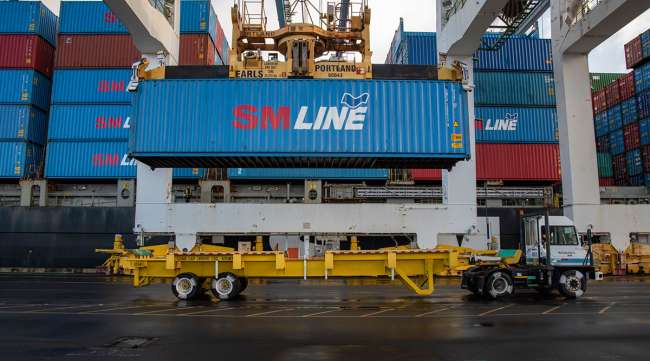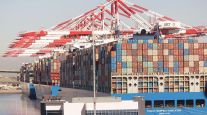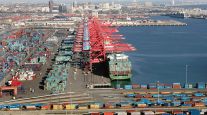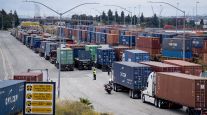Staff Reporter
Portland Port Asks Oregon for $10M to Save Container Service

[Stay on top of transportation news: Get TTNews in your inbox.]
Facing a $14 million shortfall, the Port of Portland is asking Oregon legislators for a $10 million revenue injection this year to avoid ending container service at Terminal 6, the state’s only ocean container terminal.
“Container operations at T6 are important for Oregon businesses and our region’s economy, and that’s why we’ve continued doing everything possible to maintain container service. We remain committed to working with our shipping community, with other industry stakeholders and with state leaders as we determine what’s next,” Keith Leavitt, port chief trade and economic development officer, told Transport Topics.
The port’s container service woes are linked to rising cargo volumes and having to incur higher operating costs partially due to its 100-mile distance from the ocean, which involves additional costs for vessel transit (such as double pilotage) to reach the terminal. The port’s Terminal 6 handles containers, imported and exported cars and break-bulk cargo.
“Portland is an example of a niche port that provides important local market access but also a relief valve for cargo destined for the Midwest,” Leavitt said. “From supply chain disruptions seen early in the pandemic, to climate change affecting water levels in the Panama Canal, to geopolitical unrest affecting movement through the Suez Canal, it’s never been more evident that international trade needs a diverse set of shipping gateways for a resilient economy.”

Leavitt
Unlike other West Coast ports that operate container terminals through long-term leases with private terminal operators, the Port of Portland is the only public operator of an international container terminal on the West Coast.
The Port of Portland generates 96% of its revenue from transactions with the private sector, such as fees and leases for use of services and facilities. While it receives no direct state funding, the port has been awarded grants and loans for cranes, infrastructure and river channel deepening.
RELATED: Oregon Trucking Association Sues State Over Excess Taxation
Curtis Robinhold, port executive director, sent a letter Jan. 16 to the legislative Joint Committee on Ways and Means asking for a one-time $10 million allocation to maintain container shipping services at Terminal 6 for the next fiscal year.

Robinhold
“Given the strategic nature of this service for the state and the clear public benefit, the port has endured financial losses so that the terminal would remain available for Oregon importers and exporters. This practice has never been financially sustainable. Facing a projected loss of $14 million this year, we are requesting necessary gap funding as we negotiate rate increases with carriers and seek a third-party terminal operator for a long-term lease,” Robinhold said.
An estimated 25% of Oregon goods bound for international markets pass through the Port of Portland for container shipping.
“From seafood on the coast, forest products in southern Oregon, grass seed and animal feed in the valley, vegetables and cereals in eastern Oregon, to fruits in the gorge, plus retail importers in the metro region, T6 connects businesses across the Pacific Northwest to the global economy,” a port spokesperson noted.
In 2022, the Port of Portland handled $308 million of export cargo from Oregon’s total $2.4 billion in exports of containerized water cargo. That same year, Oregon imported $6 billion of containerized cargo by water, with the share from Portland’s Terminal 6 amounting to $1.2 billion.
Want more news? Listen to today's daily briefing below or go here for more info:




